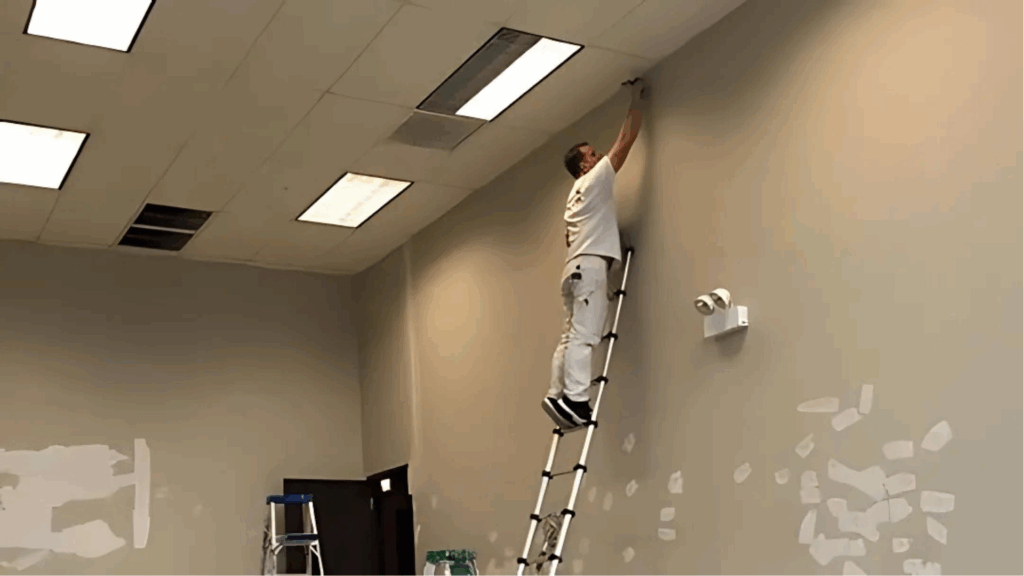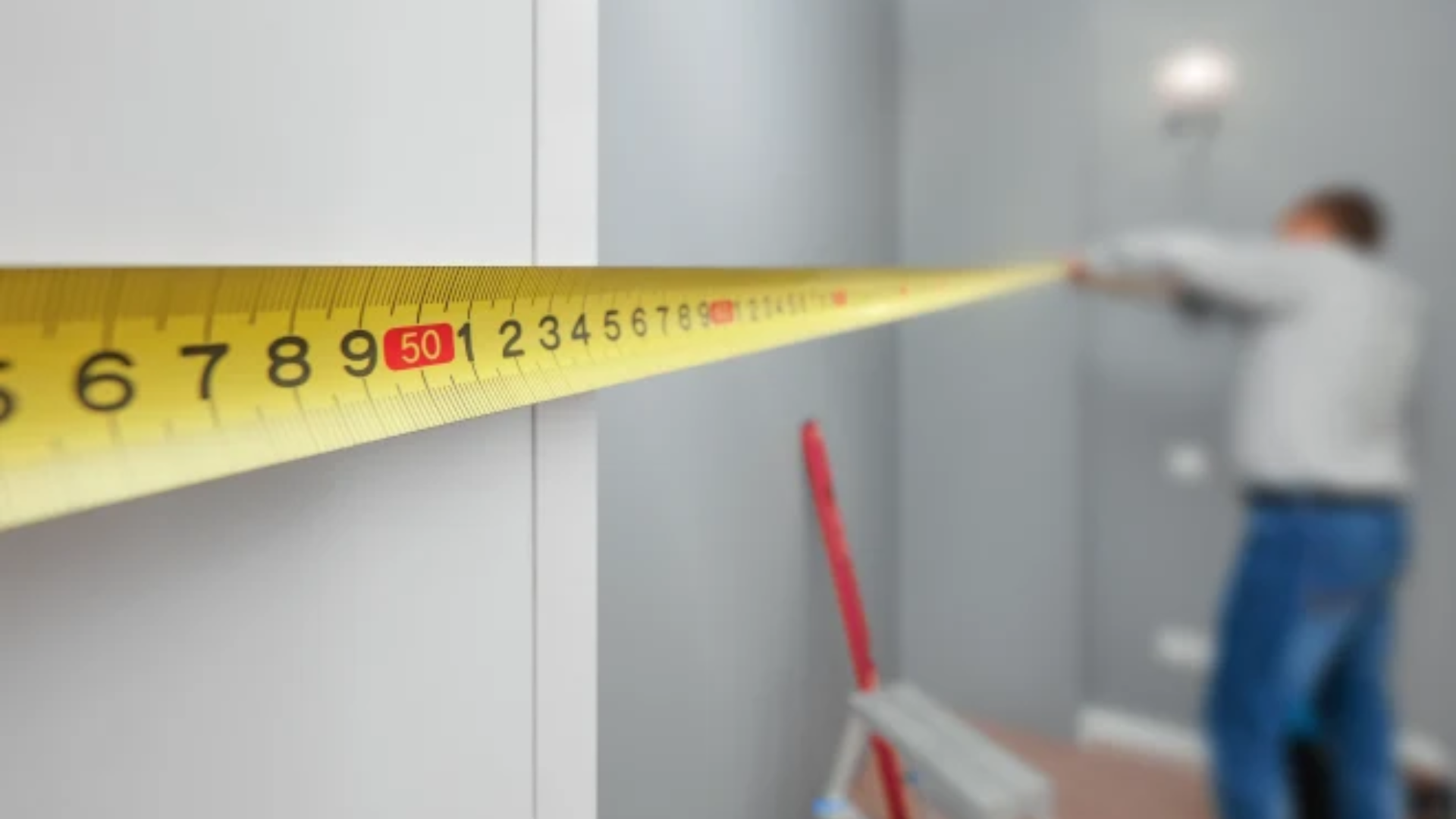When I planned my first home painting project, I quickly realized how important it was to understand the cost per square foot.
Knowing the average rate per square foot helps me stay realistic about what I can afford, especially when comparing quotes or deciding on paint types. That’s where cost calculators and detailed guides come in handy.
They take the guesswork out of the process by helping me estimate labor, materials, and surface preparation needs ahead of time.
With the right tools, I can confidently plan for every wall, ceiling, or trim in my home.
If you’re trying to keep your project on track and avoid surprise costs, starting with square footage is the smartest step forward.
What Does “Per Square Foot” Mean in Painting?

“Painting cost per square foot” refers to the total amount it takes to paint one square foot of surface area, typically including both labor and materials.
This pricing method is commonly used by professional painters and contractors because it provides a consistent and measurable way to estimate overall project costs.
To calculate the cost, measure the height and width of each wall, ceiling, or trim area.
Multiply those dimensions to get the square footage, then subtract unpainted spaces like doors and large windows.
Next, multiply the total square footage by the average cost per square foot in your area. This gives you a rough but helpful estimate.
Using this method allows homeowners to set realistic budgets, compare contractor quotes confidently, and plan painting projects with fewer surprises and better financial control.
Average Painting Costs in the USA
On average, interior painting costs in the U.S. range from $1 to $3 per square foot, while exterior painting typically falls between $1.50 and $4 per square foot.
Areas with higher living costs may see higher labor charges, and textured or damaged surfaces may require more prep, raising the total price.
| Type of Painting | Average Cost per Sq. Ft. | What Influences the Cost |
|---|---|---|
| Interior Painting | $1.00 – $3.00 | Surface condition, paint quality, labor rates, and number of coats |
| Exterior Painting | $1.50 – $4.00 | Regional climate, surface texture, prep work, accessibility |
| High-Cost Urban Areas | Higher end of the price range | Increased labor and overhead costs |
| Textured/Damaged Walls | Adds $0.50 – $1.00+ per sq. ft. | Extra prep like sanding, patching, or priming |
| Premium Paint Options | Adds $0.50 – $1.00+ per sq. ft. | Longer-lasting, better coverage, enhanced finish |
Factors Influencing Painting Costs
Understanding what drives the cost per square foot can help you plan more effectively and avoid unexpected expenses.
1. Surface Preparation
Surface preparation plays a major role in determining the total painting cost.
If walls are damaged, uneven, or full of nail holes, they’ll need to be sanded, patched, or repaired before any paint goes on.
This extra labor adds time and increases expenses. In addition, priming becomes essential for bare drywall, water stains, or dramatic color changes.
Applying a separate primer coat helps ensure proper adhesion and even coverage, but it adds another layer of work and cost to your project.
2. Paint Quality and Type
The quality and type of paint you choose can significantly affect your budget.
Premium paints come at a higher upfront cost, but they typically provide better coverage, durability, and a more attractive finish.
Over time, this can mean fewer repaints and lower maintenance. The type of paint matters too; oil-based paints are more expensive and harder to apply than latex, which is water-based, easier to clean, and dries faster.
3. Labor Costs
Labor is often the largest part of a painting project, accounting for 70% to 85% of the total cost. Painters charge based on the job’s complexity, surface condition, and time required.
Spaces with simple layouts cost less, while rooms with high ceilings, crown molding, staircases, or lots of trim take more effort and time to complete.
Inaccessible or awkward areas, such as behind cabinets or on tall exterior walls, can further drive up labor costs.
4. Number of Coats and Colors
The number of coats needed and your color choices can make a big difference in the final cost.
Switching between light and dark colors usually requires at least two coats, sometimes more, especially if you skip priming.
Every additional coat adds more labor and more paint. Using multiple colors in one space also increases the time it takes to prep, tape, and apply, especially around trim or accent walls.
For a more budget-friendly project, minimizing color changes and sticking with one-coat coverage options can help.
Recommended Painting Cost Calculators
These tools help you estimate painting expenses quickly and accurately by factoring in key project details like size, labor, and paint quality.
1. Homewyse Painting Cost Estimator
The Homewyse Painting Cost Estimator is a robust tool that offers a highly detailed breakdown of painting costs.
It considers your region, surface condition, paint quality, and labor type to generate tailored estimates.
This makes it ideal for both DIYers and those hiring professionals.
You can also choose different project complexities to see how the total changes, making it a smart resource for realistic budget planning.
2. Calculator Adam Paint Calculator
Calculator Adam provides a simple and user-friendly paint calculator that’s great for quick estimates.
You just input basic details like total square footage, number of rooms, and your preferred paint quality.
It’s ideal if you’re looking for a fast, no-fuss way to get a rough idea of your painting budget.
While it doesn’t factor in region-specific costs, it’s still a helpful starting point for homeowners planning a project.
3. Paintzen Cost Estimator
The Paintzen Cost Estimator lets you enter details like square footage, ceiling height, and finish type to estimate both paint and labor costs.
It’s designed with user convenience in mind and offers more tailored results than basic calculators.
The tool works well for homeowners comparing DIY costs to professional ones and for those seeking a clearer understanding of expenses based on their room’s specific features and finishes.
Benefits of Using Online Calculators
Online calculators make it easy to estimate painting costs accurately by customizing inputs like room size, paint quality, and labor.
- Quick Estimates: Generate cost projections instantly without manual calculations.
- Customization: Adjust inputs like room size, paint type, number of coats, and labor type for personalized results.
- Informed Decisions: Understand how different factors impact overall cost before starting the project.
- Better Planning: Helps you create a more accurate and realistic budget.
- Comparison Tool: Allows you to evaluate contractor quotes against your own estimates.
Tips for Reducing Painting Costs
Simple strategies like DIY prep, smart timing, and careful shopping can help lower your painting expenses without sacrificing quality.
- DIY Preparation: Sanding, patching, and priming surfaces yourself can significantly reduce labor charges.
- Bulk Purchasing: Buying paint, brushes, and tape in larger quantities often leads to volume discounts.
- Off-Season Scheduling: Painters may offer lower rates during fall or winter when demand drops.
- Multiple Quotes: Comparing at least three contractor bids ensures fair pricing and better service.
- Use Leftover Paint: For touch-ups or small projects, leftover paint from other jobs can save money.
- Stick to Fewer Colors: Using one or two colors reduces the need for multiple products and setup time.
- Choose One-Coat Paints: Premium one-coat formulas can reduce labor and material costs in the long run.
- Prep Before the Pros Arrive: Clearing furniture and taping edges can save painters time, and you money.
Conclusion
Estimating painting costs per square foot has really helped me take control of my home improvement projects. It allowed me to plan ahead, stay on budget, and avoid surprises.
Once I understood how factors like labor, paint quality, and wall prep impact the price, everything became easier to manage.
Online calculators made it simple to explore different scenarios before making decisions.
From measuring walls to comparing quotes, I could move forward confidently.
If you’re planning to paint your home, start by calculating square footage and using those calculators; they’ll save you time and stress.
Feel free to drop a comment or ask me any questions about your project!
Frequently Asked Questions
How do I calculate the square footage for painting?
Measure the height and width of each wall or ceiling, multiply them to get the area, and add the totals together. Subtract any doors or large windows to find the actual paintable surface.
Are painting estimates per square foot accurate?
They offer a solid starting point, especially when using online calculators. Actual costs may vary based on wall condition, labor rates, and paint type.
What’s included in per-square-foot painting costs?
Most estimates include labor, materials, and paint. However, prep work like repairs or primer coats may be billed separately.

